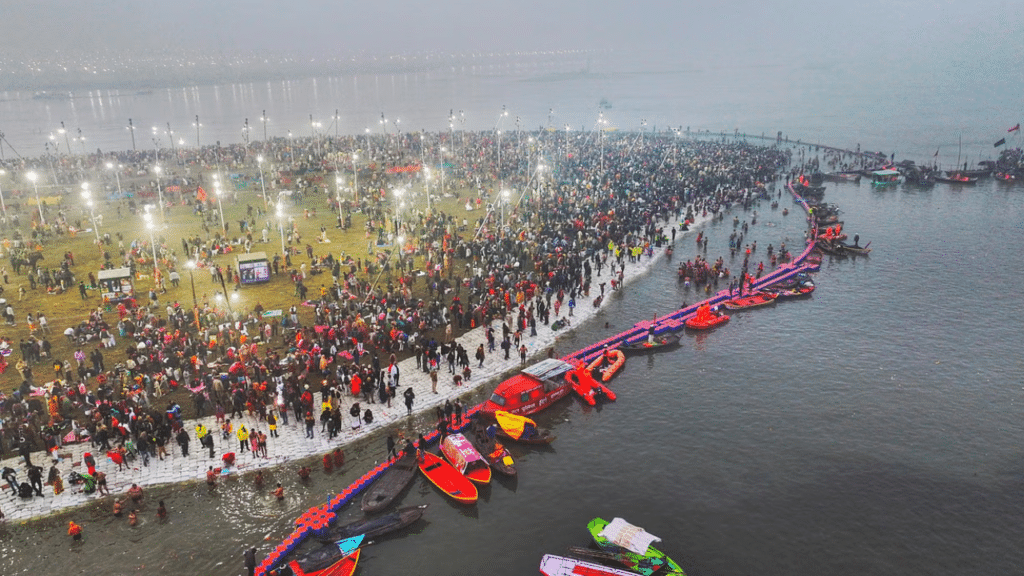The Maha Kumbh Mela, celebrated once every 144 years, has commenced in Prayagraj, India, drawing an unprecedented influx of pilgrims and tourists. This year’s festival is expected to attract over 400 million attendees during its 45-day duration, making it the largest gathering in human history.
Economic Impact: A Multi-Billion Dollar Boost
Beyond its deep spiritual significance, the Maha Kumbh Mela serves as a major economic driver for both the region and the nation. The Uttar Pradesh state government estimates that the event will inject approximately ₹2 trillion (around $24 billion) into the state’s economy. With each visitor expected to spend an average of ₹5,000, the local economy is poised for a significant boost.
Key Sectors Benefiting from the Kumbh Mela
1. Tourism and Hospitality
With millions of visitors arriving, the demand for accommodation is at an all-time high. Authorities have set up over 150,000 tents to house pilgrims, benefiting local hotels, lodges, and guesthouses. This surge in tourism also creates numerous temporary and permanent employment opportunities.
2. Infrastructure Development
To support such a massive event, significant investments have been made in roads, bridges, sanitation, and public transport. These developments not only serve the immediate needs of the festival but also leave a lasting impact on the region’s infrastructure.
3. Retail and Local Businesses
A massive congregation of visitors leads to increased demand for food, souvenirs, and daily essentials. Local markets, street vendors, and small businesses thrive as pilgrims and tourists contribute to the region’s economy through their purchases.
The Spiritual and Mythological Significance
The Maha Kumbh Mela has its roots in Hindu mythology. According to legend, during a celestial battle between gods and demons, drops of an elixir of immortality fell at four sacred locations, including Prayagraj. Bathing in the sacred confluence of the Ganges, Yamuna, and the mythical Saraswati rivers during this period is believed to cleanse one’s sins and lead to spiritual liberation.
Logistical Challenges and Government Planning
Managing an event of this scale presents significant challenges. The government has allocated nearly $800 million to ensure the smooth execution of the festival. Investments have been made in sanitation, medical facilities, and security measures to handle the vast number of attendees.
Safety Measures and Crowd Management
Despite meticulous planning, past Kumbh Melas have witnessed unfortunate incidents. In a previous edition, a tragic stampede resulted in the loss of 30 lives and injuries to 60 others. To prevent such mishaps, authorities have enhanced security measures, introduced crowd control strategies, and deployed thousands of police personnel to ensure the safety of attendees.
A Confluence of Culture, Spirituality, and Economy
The Maha Kumbh Mela is not only a celebration of India’s cultural and spiritual heritage but also a powerful catalyst for economic growth. Its ability to attract millions from across the world highlights its universal appeal and its substantial contribution to the local and national economy.
As the 2025 Maha Kumbh Mela unfolds, it stands as a testament to the seamless blend of tradition and modernity, spirituality and economic progress, reinforcing its status as a cornerstone of India’s cultural and economic landscape.

